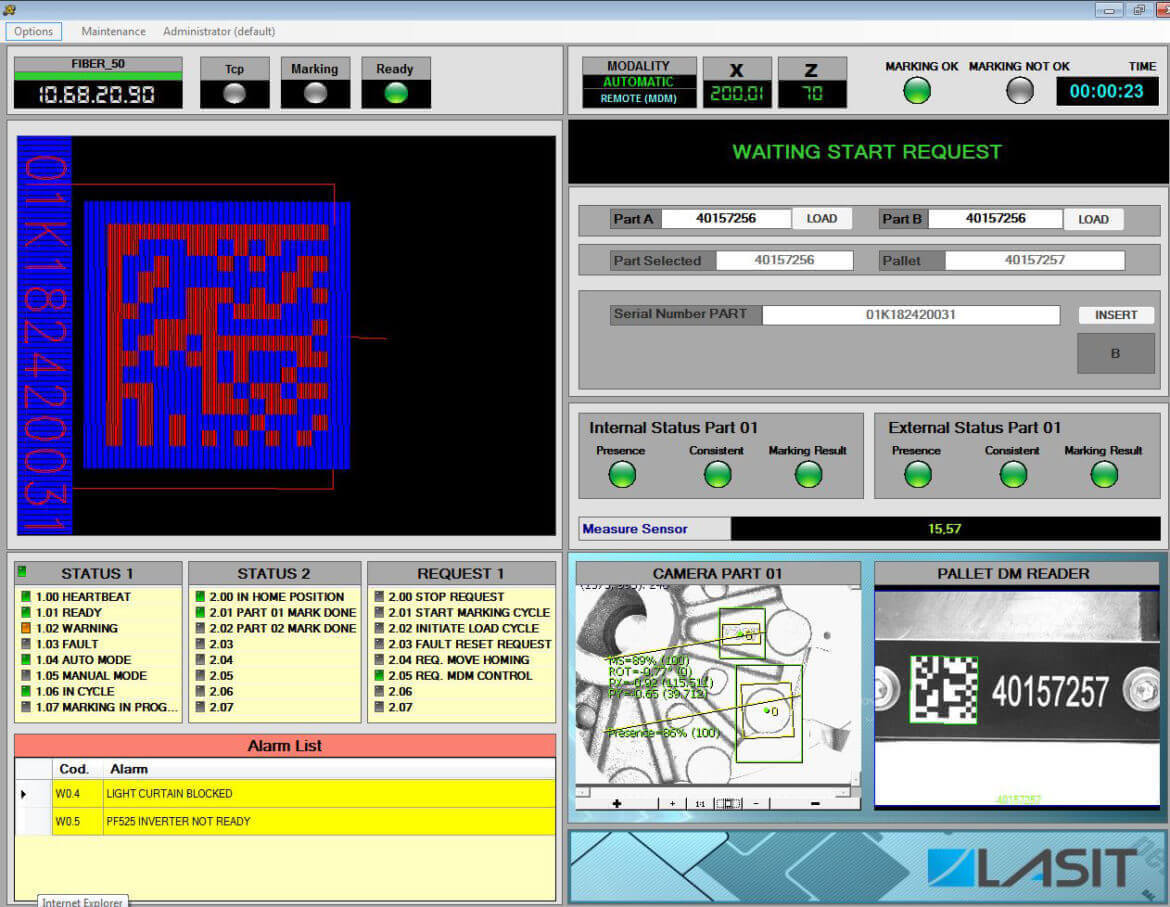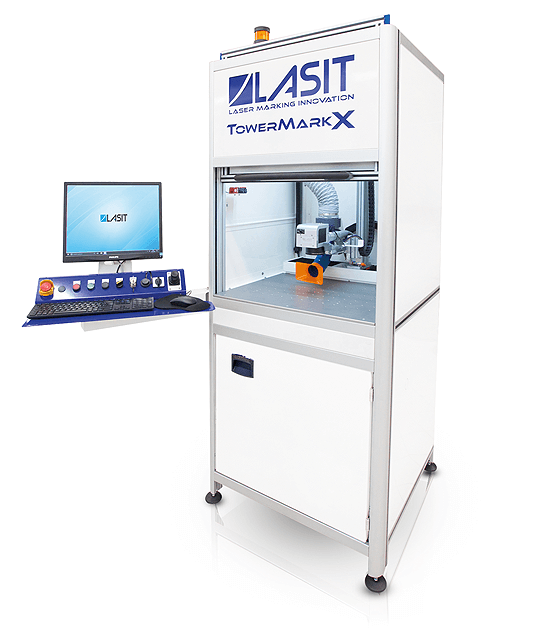Laser marking for hydraulics
Hydraulics include different product categories, and laser marking solutions differ according to the type of application: direct marking on the component or laser marking on a plate that will be affixed to it.
Since traceability and high output are the main requirements for hydraulics, LASIT has developed several solutions to guarantee the high quality of the marked 2D codes and to automate processes using software that interfaces with the customer’s database.
Laser marking on plates is required when producing valves, pumps and filters that are too large and bulky to be handled and marked directly.
To meet productivity requirements, LASIT has developed several solutions, including the Flylabel laser marker, capable of mounting up to 4 loaders, with a capacity of 400 plates each.

Choose LASIT laser marking for hydraulics
LASIT prioritizes hydraulics due to the significant demand across the country and globally. This increased demand stems from the shortage of companies capable of fulfilling all hydraulic marking needs.
LASIT’s rotary table laser markers are designed for direct marking on components during machining. These markers are ideal for high-volume production, exceeding 200 parts per day, enhancing efficiency and output.
The Flylabel laser marking machine, equipped with a Pick & Place system using a Venturi vacuum, ensures plates remain scratch-free and reduces the risk of mechanical failure. This system outperforms traditional unloading methods used by other manufacturers.
For marking diverse components, LASIT’s Towermark line offers a versatile solution. These markers can be configured with various accessories to meet specific requirements, providing a flexible and efficient marking system.




Flylabel laser marker
The Flylabel laser marker is ideal for automatically laser marking plates. The safe and versatile Flylabel laser system adapts to production needs.
The Flylabel laser marker can be configured for up to 4 loaders. Each loader can hold up to 400 plates. The Pick & Place system uses a Venturi vacuum to pick up and unload plates so they don’t get damaged during pickup.
The Flylabel laser marker has multiple configurations:
- 1 loader with disorderly unloading
- 2 loaders with ordered unloading (plates are placed in a magazine in the same position as the loading magazine)
- 2 loaders with disorderly unloading
- 3 loaders with disorderly unloading
- 4 loaders with disorderly unloading
The Pick & Place system is available for each configuration.


LASIT also specializes in designing customized software, which stands out for ease of use and process management speed.
Once the software is configured to the laser marking requirements, the operator’s job is done. The laser marker operates automatically until the plates are unloaded. At that point, the operator repeats the cycle by stacking new plates in the loaders.
For laser engraving on small filters and valves, the laser must be capable of marking on a circumferential arc and you need an auto-centering system for the component. Solutions here can be a long focal length with a flat field lens or a three-axis head for focal distance management.
3D laser marking
The LASIT three-axis head has a system of linear motors, two X and Y rotaries that allow the laser beam to move along the axes, and a third axis for focusing.
The laser beam passes through a photographic objective with a movable lens, which in turn is mounted on a linear side shifter. Our FlyCAD software automatically manages operation.
The heart of the three-axis head is its optical design, which varies according to the type of application and application requirements. The system can adapt to the size of the working field and the size of the required laser spot.
Scanning mirrors are positioned after the lenses of the photographic objective. The raw laser beam enters the optical system through the dynamic expansion lens. The photographic objective lenses re-draw the Gaussian beam formed by the dynamic expander lenses on the target plane.
The movement of the dynamic expander lenses through the linear side shifter changes the distance of the focal plane and therefore the dynamic focus. The mirrors (MX and MY) — which are located in the XY scanning module — bend the beam and direct it by angular deflection to scan the work plane.
This feature of the 3-axis head works especially well on water bottles, glasses, and other rounded items. LASIT was one of the first manufacturers in the world to make this system in 1991.

Our Advantages
| Sole supplier | No intermediary, from design to realization |
| Interface | PROFIBUS protocols, PROFINET and PROFIsafe |
| Integration | Integrations with MES / ERP systems |
| Industry 4.0 | Business database interaction for industry 4.0 |
| Vision system | Automatic centering, 2D code verification and grading, OCR recognition |
| Laser system | For every application and integration in production chains |
